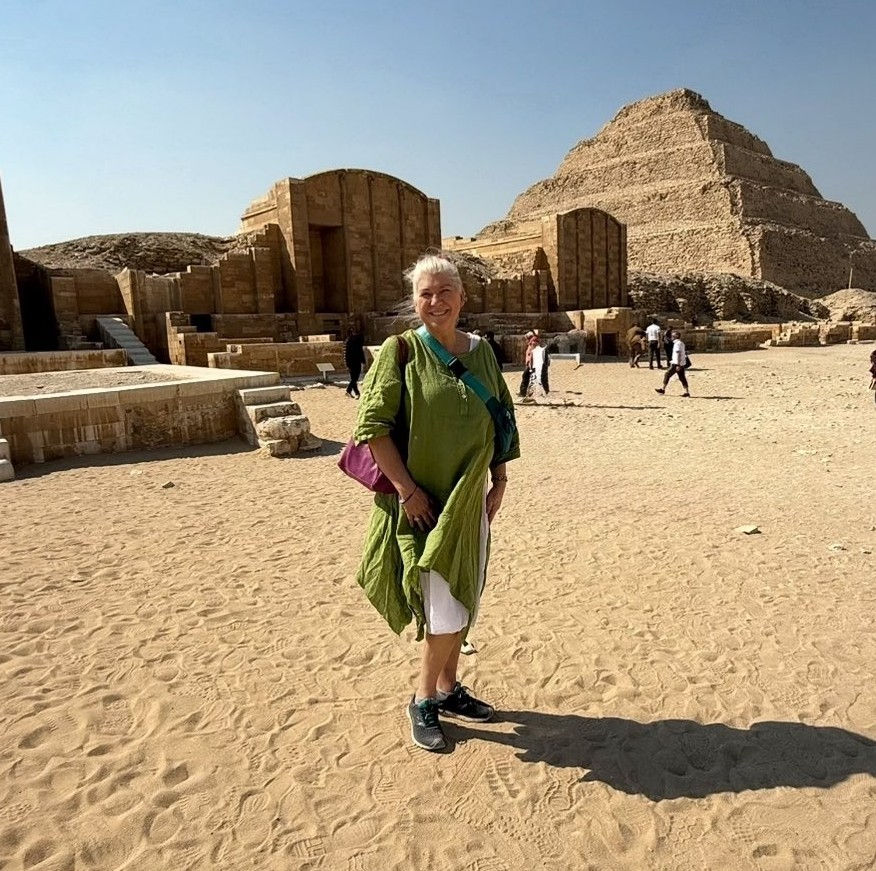🎨 Painting with Wax — A Rare Artform!
- paigegrobertson

- May 12
- 3 min read
By Paige Gunter Robertson – Encaustic Artist
Ancient Origins of a Rare Medium
Encaustic wax painting is one of the oldest known art forms—and yet, it remains one of the rarest practiced today. As an encaustic artist, I feel honored to work in a medium that connects me directly to the Egyptians, Greeks, and Romans. In fact, the word “encaustic” comes from the Greek enkaustikos, meaning “to burn in”—a nod to the heat that’s essential to the process.
“This method was used by the ancient Egyptians, Greeks, and Romans… The Egyptians sealed their artwork with wax and fire that is why their paintings in the pyramids are still so clear and vibrant.”
Centuries ago, ancient artists used encaustic wax not only to paint portraits but also to seal warships, decorate temples, and preserve color through time. Imagine: burning pigment into beeswax and resin to protect your creation from wind, water, and war. That’s the kind of powerful permanence encaustic offers.

Wax, Fire, and Pigment — Then and Now
The basics of hot wax painting haven’t changed much in 2,000 years: a mix of beeswax, natural resin, and pigment is heated until molten and applied to a rigid surface—typically wood or other porous substrates. What’s changed is how we apply it. R&F is an excellent resource for encaustic materials: www.rfpaints.com
“I use a crème brûlée torch (as well as a butane torch, a blow torch and a professional heat gun). I etch into the surface. Fire creates effects through physics—colors fuse, layer, and evolve.”
Today, modern encaustic artists like myself use hotplates, heat guns, torches, and palette knives to layer, carve, blend, and fuse. Every brushstroke is followed by a wave of heat that bonds it to the layers below.

A Personal Journey into Encaustic Art
I stumbled into this magical medium in 2014 through a casual workshop. At the time, I had young children and couldn’t pursue it fully—but I knew I was hooked. I said to myself: One day, I am going to Penland.
That dream came true just a few years ago, when I finally studied encaustic professionally at Penland School of Craft. It deepened my understanding of the medium, very important safety protocols, and reconnected me to its profound history and my expressive potential.

Why Encaustic is Still So Rare
Despite its beauty and history, encaustic wax painting is still a rare art form—and for good reason. It’s not easy.
You need heat, tools, and ventilation.
You must layer carefully and fuse each stage.
Brushes can’t be cleaned—only reused with similar colors.
You’re literally working with molten wax and fire.
“Encaustic wax has a mind of its own. I tame the phenomenal fire process. It is magic.”
Most artists avoid encaustic because of its learning curve. But for those of us who embrace the challenge, it offers unparalleled texture, luminosity, and depth. No other medium lets you embed, carve, collage, and sculpt all at once.

Encaustic Painting Today: A Rare Renaissance
Encaustic art is having a quiet but passionate resurgence. Contemporary artists are blending the ancient with the modern—incorporating photography, mixed media, found objects, and pigment powders (like the indigo I brought back from Egypt!).
“It’s not just painting. It’s fusing. Sealing. Sculpting. It’s preserving emotion in wax.”
Whether you’re a collector, a creator, or simply curious, I invite you to explore this rare and magical world with me.
If you’re curious about collecting encaustic wax paintings, or want to learn more about my creative process, I’d love to hear from you. Whether you're new to hot wax painting or a longtime art lover, there’s something luminous here for everyone.

Comments